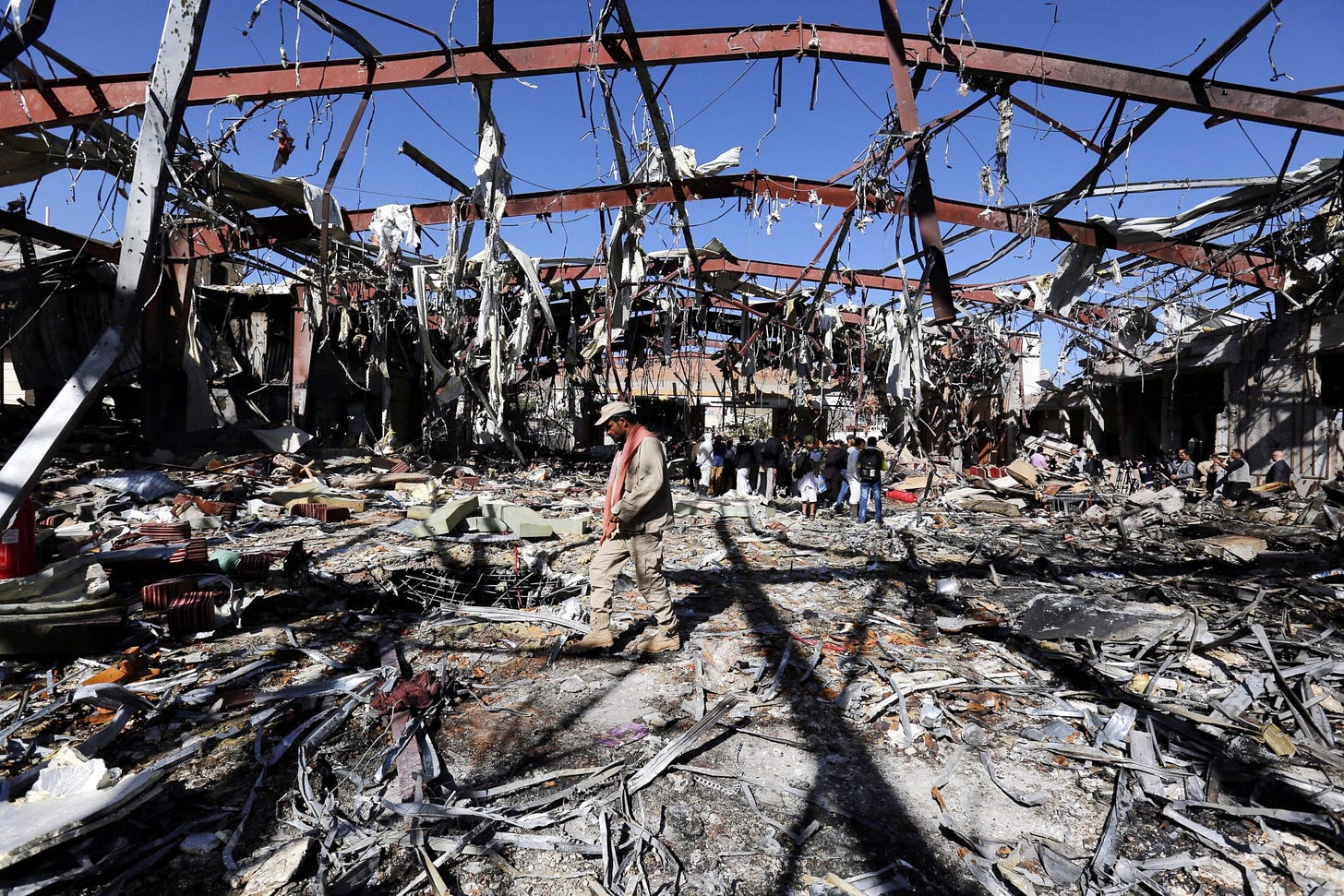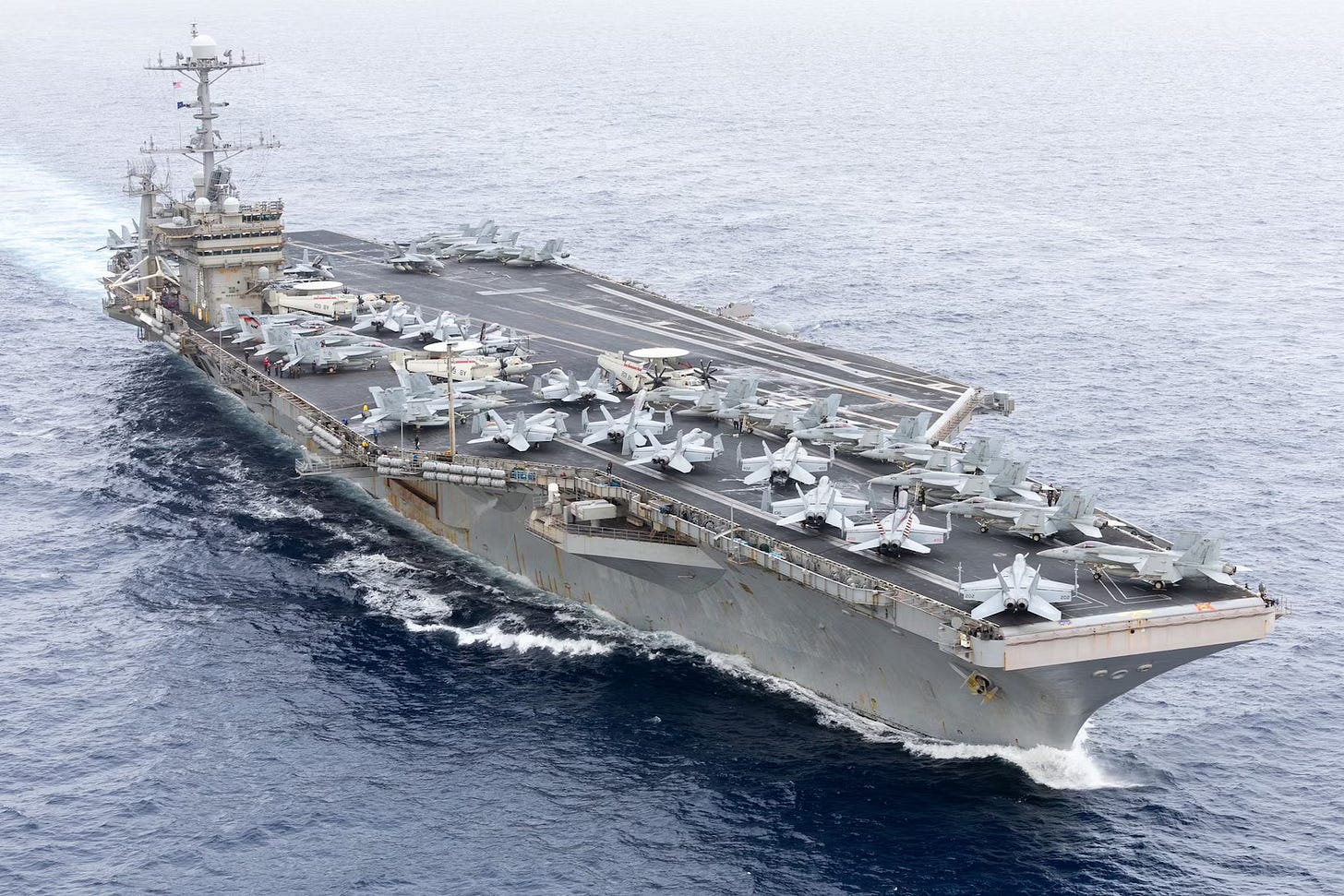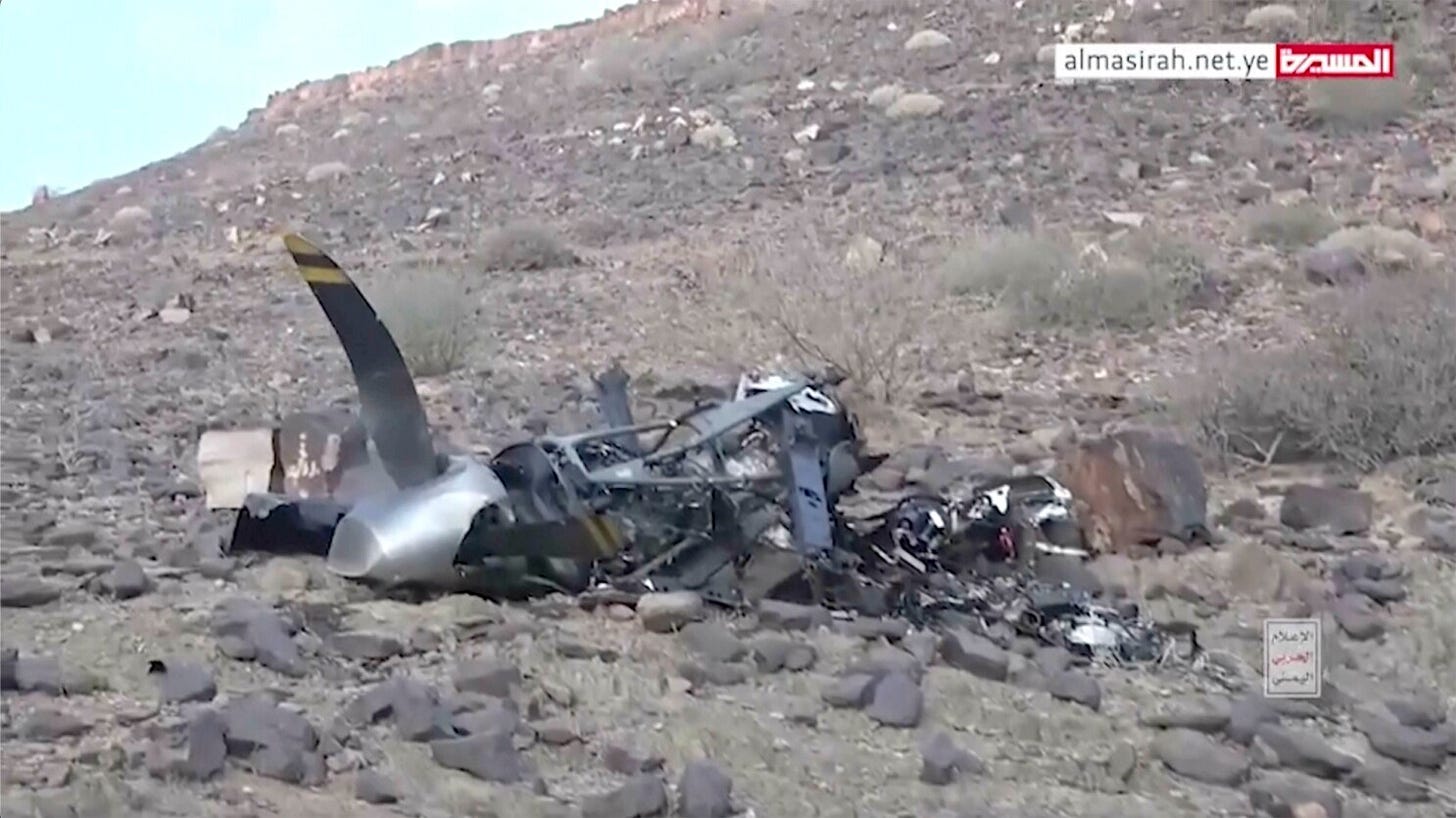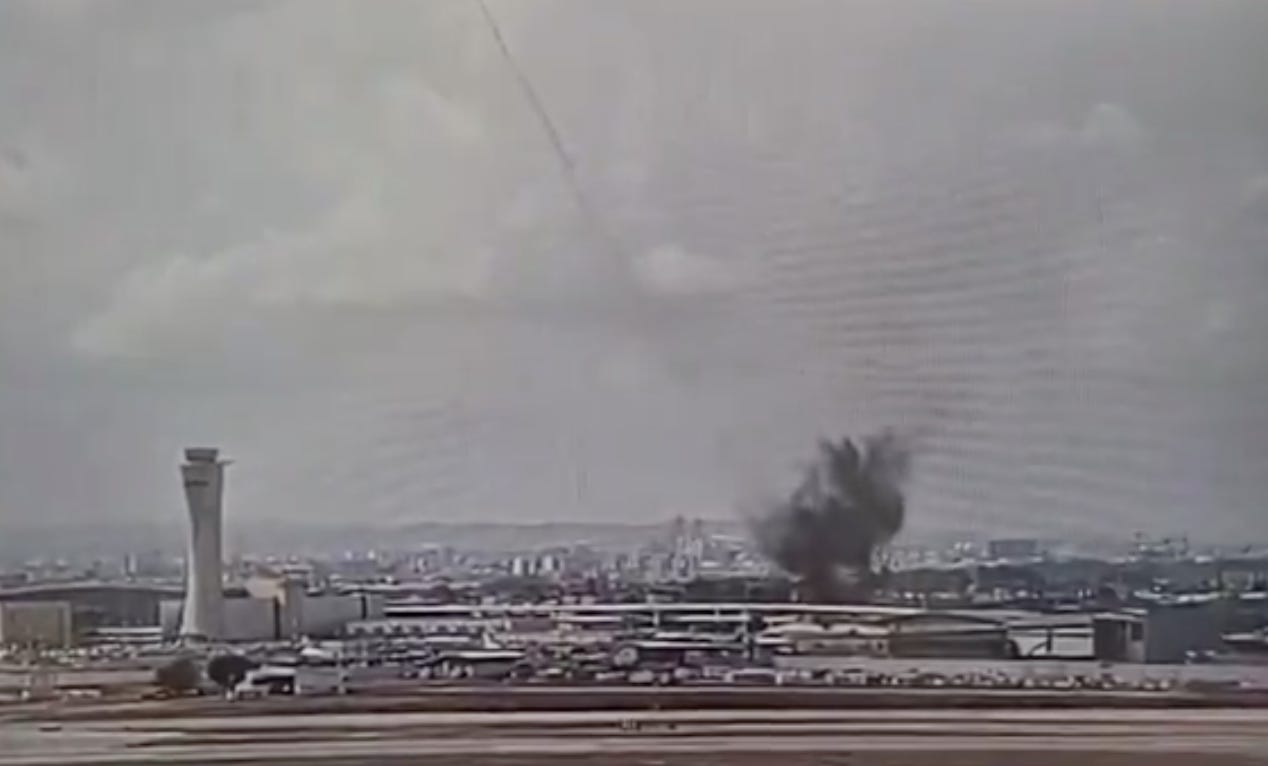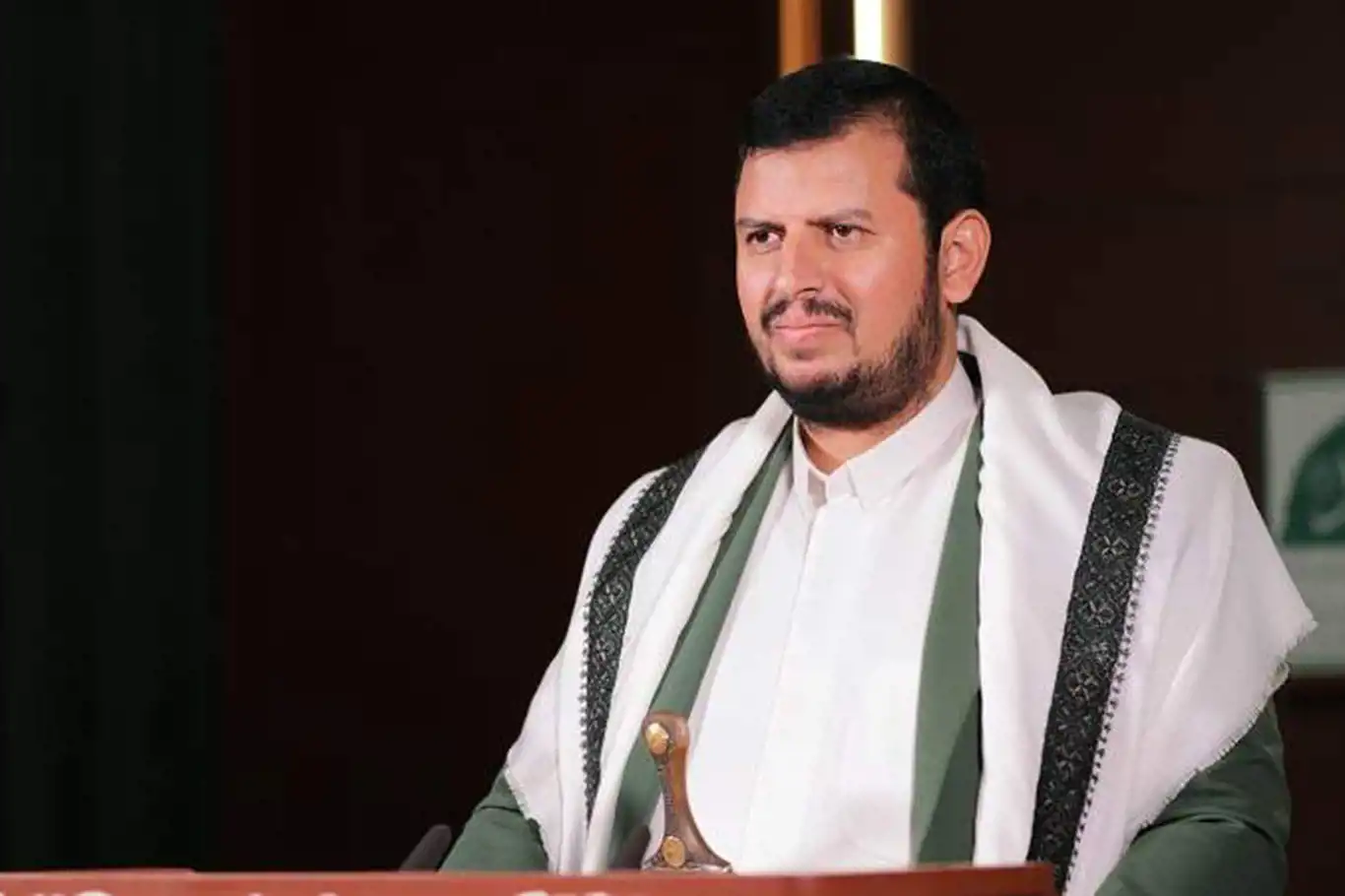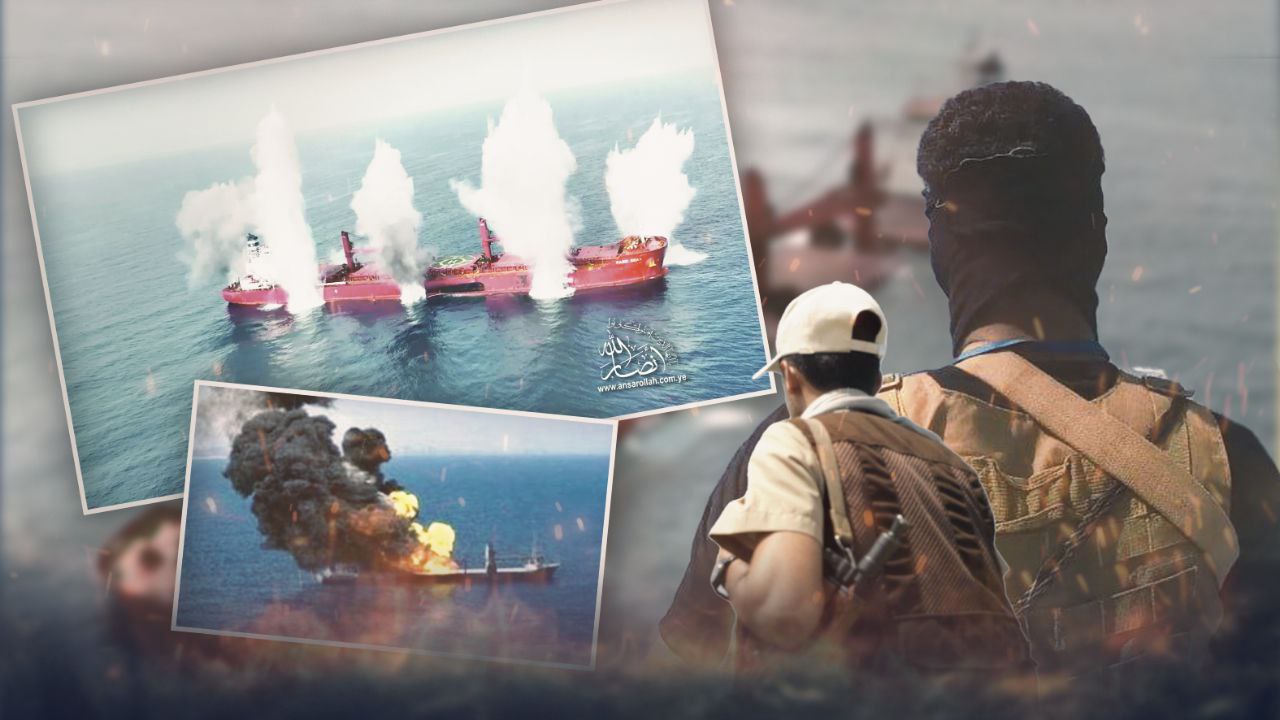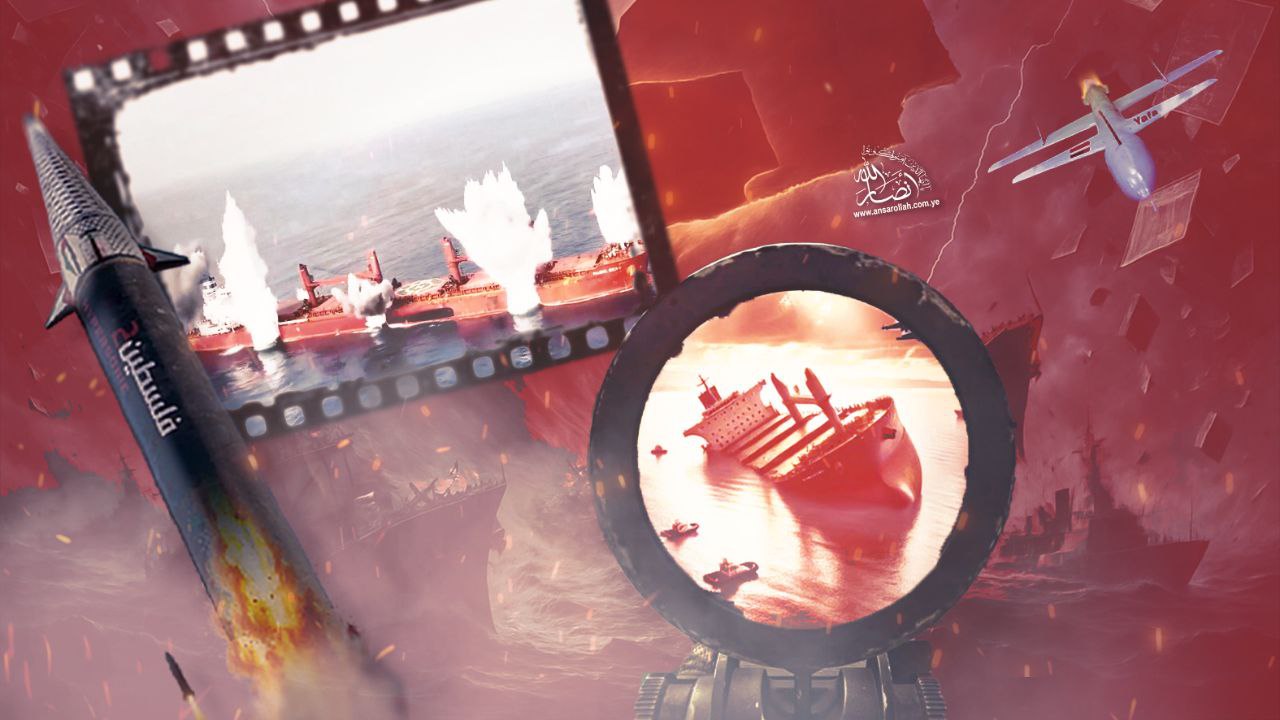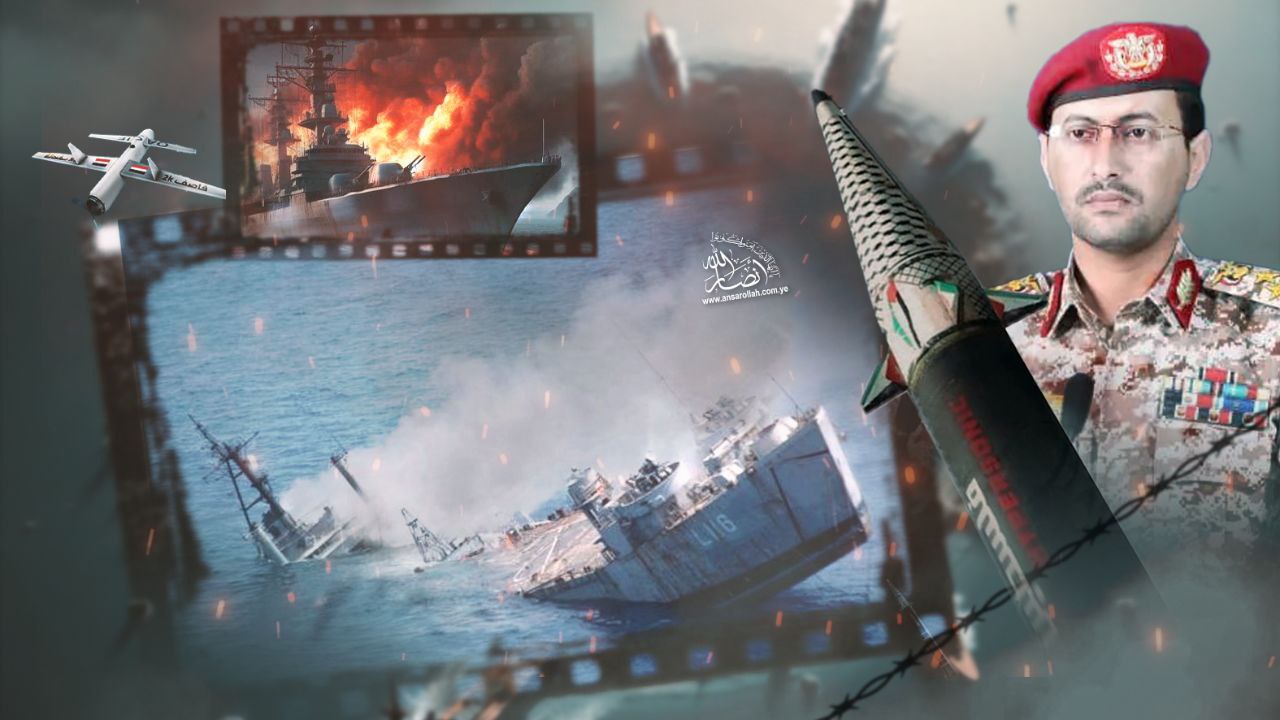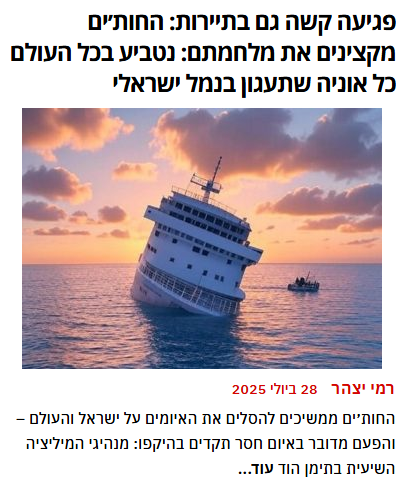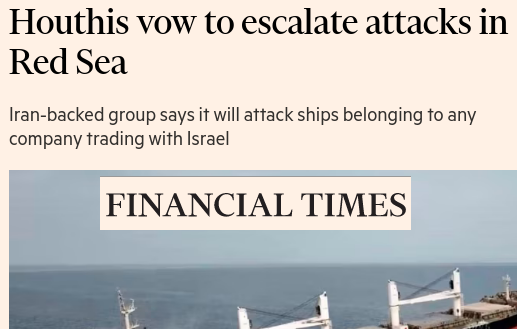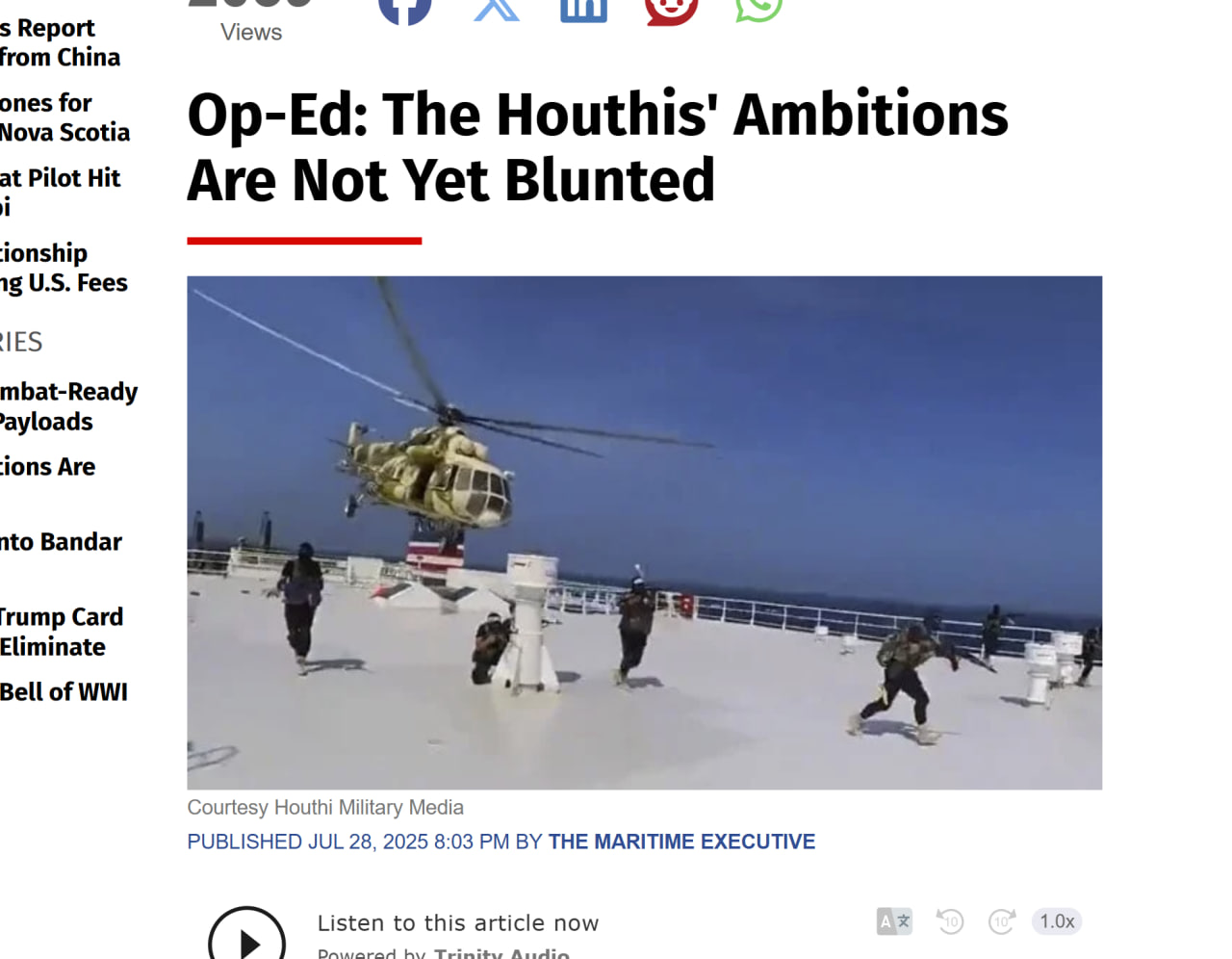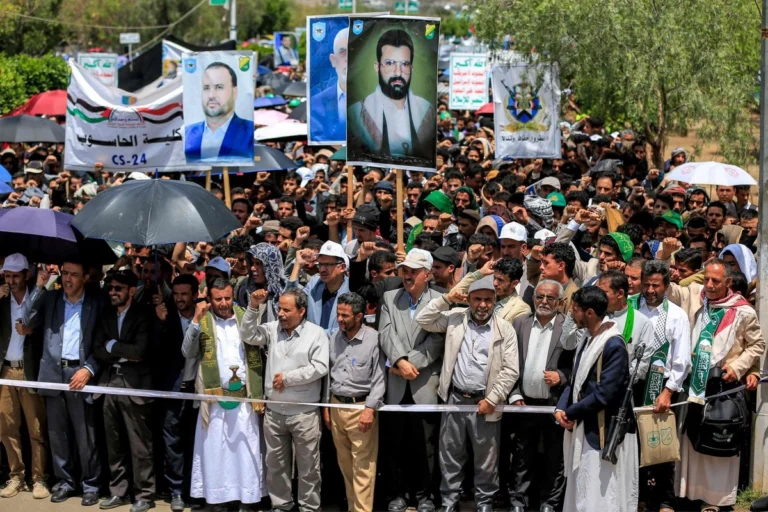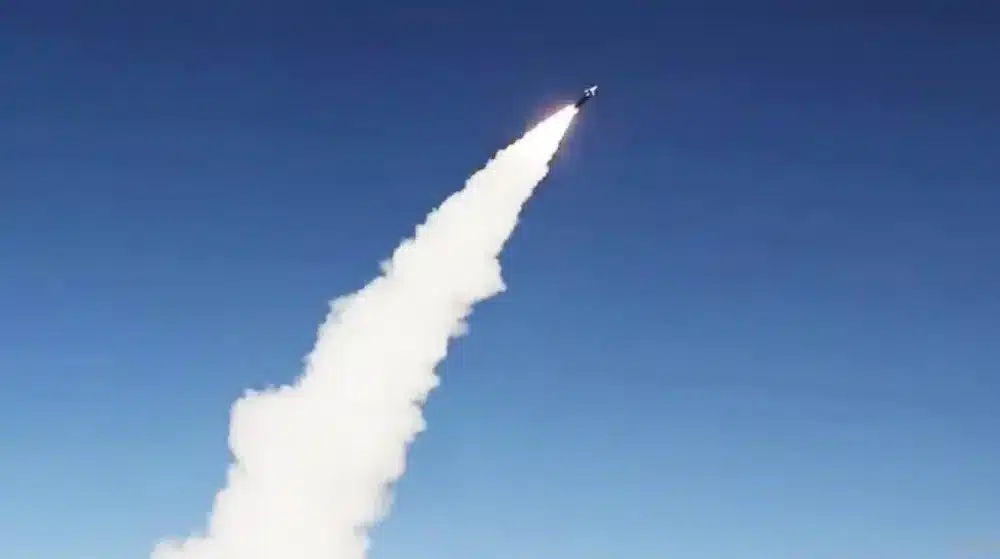Understanding Yemen Part I: The Revolution
Posted by Internationalist 360° on June 30, 2025
Tim Anderson
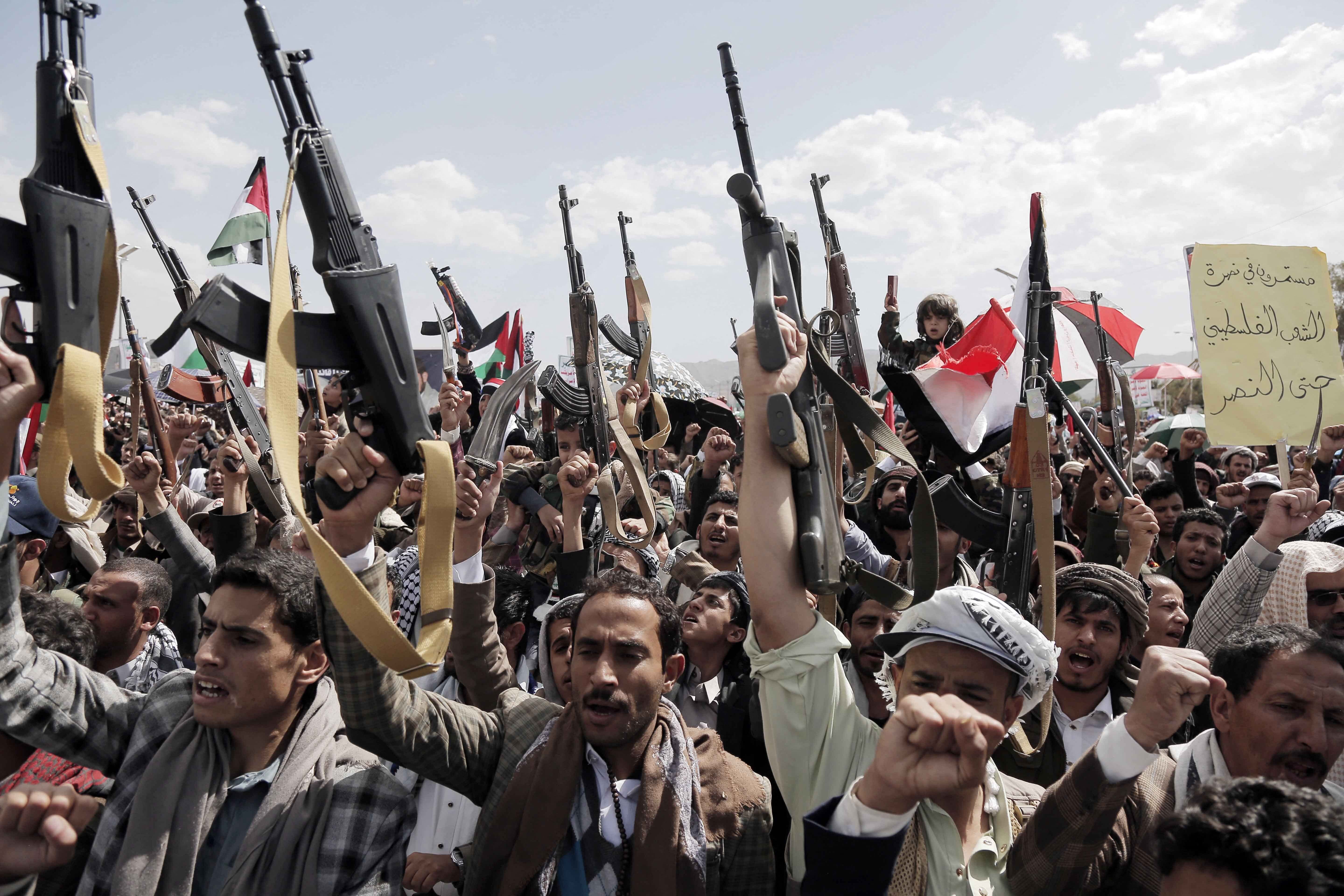 In the first of his two-part series, Tim Anderson dismantles Western myths about Yemen by tracing the roots, values, and political success of the Ansar Allah-led revolution, the Arab Spring’s only true victory.
In the first of his two-part series, Tim Anderson dismantles Western myths about Yemen by tracing the roots, values, and political success of the Ansar Allah-led revolution, the Arab Spring’s only true victory.
Yemen, the most independent Arab nation and with the only successful revolution arising from the so-called Arab Spring of 2011, has been subject to repeated attacks and vilification by Washington and allied regimes. Behind these attacks is a backdrop of disinformation which continued through the US-Saudi-Emirati war on revolutionary Yemen (2015-2022) and was reignited after Yemen intervened against the Israelis for their genocide in Gaza (2023-2025). New pretexts were invented to attack the courageous nation.
In late 2023, the Yemeni armed forces (misleadingly called “Houthi rebels”) began their Red Sea operations in support of Gaza, but were then assailed by both the Israelis and their Anglo-American sponsors. The UK and the USA claimed they had engaged in “self defense” as they attacked Yemeni infrastructure, even while the UN Security Council argued for extension of an earlier ceasefire. Those supplying and protecting the genocide in Gaza accused Yemen of “illegal attacks” (UN Press 2024) while Yemen asserted that the 1948 Genocide Convention required direct action to prevent and punish those committing the crime of Genocide and their accomplices. Former UN lawyer Craig Mokhiber, who resigned over the crimes in Gaza, agreed that “The US is bombing Yemen because Yemen is acting, as required by international law, to stop the genocide and unlawful siege in Palestine” (Mokhiber 2025). However, the situation is obscured by background myths over Yemen and the Ansar Allah-led government.
How is it that the Western regimes, which claimed to support the fake revolutions of Lebanon, Libya, and Syria, waged constant war against the actual Ansar Allah-led revolution in Yemen?
This contradiction relies on popular myths, set up to fool people. To understand properly, we should consider the key elements of the disinformation on Yemen alongside the history and values of Ansar Allah.
The Ansar Allah-led revolutionary government, in place since late 2014, controls about 75% of the populated areas of Yemen (Anderson 2023), but has only been recognised by the Islamic Republic of Iran and, for a brief time, by the Assad government in Syria. In the early years (2014-2015), Washington managed to convince the UN Security Council to pass a series of resolutions against “Houthi rebels” in Yemen whom they claim were destabilising the Arabian Peninsula. Later a war coalition led by Washington, the UAE and the Saudis, falsely claimed that these “Houthi rebels” were merely a proxy of Iran.
In fact, Zaydi leaders of the Houthi clan created the Ansar Allah movement, which has spread much wider in the country, forming a coalition government which includes large sections of the former main opposition party. As is well recognised (Popp 2015; Sanaa Centre 2021), Ansar Allah has been fighting sectarian Wahhabi and Muslim Brotherhood groups, a similar coalition of forces to those used against Libya, Syria, Iraq, Iran, and Lebanon.
As of 2025, an Ansar Allah-led revolutionary coalition government (disparagingly called ‘Houthi rebels’, as though it were a family regime) has controlled the Yemeni capital Sanaa and most of the country’s populated areas for more than a decade. In late 2016, this coalition including sections of the opposition General Peoples’ Congress (GPC), formed a National Salvation Government (NSG) (Rezeg 2016) whose Prime Minister was for many years Abdul Aziz Habtoor, a figure in the GPC and a defector from the transitional regime of Mansour Hadi (CNN 2016). In 2024, this NSG was replaced by a Government of Change and Construction, led by Ahmad Ghaleb Nasser Al Rahwi (MEMO 2024). Al Rahwi is another former leader of the GPC.
After some years, informed commentators recognised that “Ansar Allah, defined as ‘the de facto authorities’ in some UN documents, were organising the structures of daily life for a large majority of Yemenis (Bell 2022). The North American Brookings think tank recognised that “the Houthis have won in Yemen” (Riedel 2022). However, the denial of that basic reality has helped fuel war and siege. Crocodile tears have been shed at the United Nations over the bombed and besieged Yemeni citizens, while a US-Saudi-UAE-Israeli coalition continues its bloody war, and the UNSC imposes punishing sanctions on the revolutionary government and therefore also on the majority of the population.
Washington’s mantra is that “the Houthis, officially known as Ansar Allah (Partisans of God), are an Iranian-backed, Shiite Muslim military and political movement in Yemen … [which] has waged a series of bloody insurgencies against the Yemeni government since 2004, overthrowing them and seizing power in Sanaa in 2015” (CEP 2022). The ‘Yemeni government’ mentioned here is the 2011-2014 transitional regime led by Mansour Hadi. Yet Hadi resigned and left the country for Saudi Arabia in early 2015, and he and his successors have been in exile ever since (Amos 2015). Regardless, UNSC resolutions have designated Hadi and his entourage as the ‘President’ and ‘government’ of Yemen, and ‘Houthi rebels’ as a sanctioned entity. This distortion lies at the root of the failure of the UN to properly address the Yemeni crisis.
In a religious sense, Ansar Allah is a Zaydi revivalist movement, quite distinct from Shiism, except that their religion, like that of the Shiia, urges rebellion against unjust rule. Unlike the Shiia, however, Zaidis do not believe in the infallibility or hereditary transmission of a line of Imams. They are often said to be closer in jurisprudence to the Hanafi school of Sunni Islam (Khan 2016). It was mainly after Ansar Allah rose to power that it began to enjoy some support from Iran.
US-aligned writers present Yemen as a “tribal democracy” (al-Qarawi 2011), naturally fragmented by “religious and cultural divisions” (Robinson 2021). Yet that caricature ignores the role of imperial intervention in fragmenting Yemen and the decades-long construction of a genuine “social revolution” (Zabarah 1984). Issaev (2018) explains in some detail why the Ansar Allah-led revolution of 2014 is best seen as a continuation of the ‘unfinished’ Republican revolution of the early 1960s.
The political process that led the Houthis to form Ansar Allah and to subsequently create a coalition which controls most of the country has involved alliances with other groups, like Yemen’s Baath Party (Arab nationalists) and Socialists (Hizb al Ishtiraki), while Ansar Allah created the Steadfast Youth movement (Shabab al Sumud) (Wells 2012).
Regardless, the Western story remains broadly that the ‘revolution’ of 2011 was just the protest and the ousting of former President Saleh. From this orientalist perspective, the “Houthi takeover” is portrayed as something separate and aberrant (MEMO 2017). A better view is that the Ansar Allah coalition was central to the continuation of a real, indigenous Yemeni revolution (al-Fasly 2015). The revolutionary government speaks of “The Revolution” as defined by their takeover of the capital on 21 September 2014, to demonstrate their pride in “embedding themselves in Yemeni history and a notion of Yemeni traditional culture” (Mohammad 2020).
A series of foreign interventions followed a GCC (Gulf Cooperation Council – the Arab monarchies of the Gulf, led by Saudi Arabia) ‘peace initiative’, which attempted to again divide the country and block this revolution. Those interventions were defeated. From 2015 onwards, most attacks relied on Saudi-led air raids and mercenary ground forces.
US troops have directly intervened in Yemen several times since 2015, under the pretext of anti-terrorist operations. Of course, this is the same pretext used for the proxy wars against Syria and Iraq. In fact, the chief US target, the Ansar Allah-led revolutionary government, has long been the most established anti-al-Qaeda force in the Arabian Peninsula. Ansar Allah has been “staunchly opposed to al-Qaeda and Sunni Salafist movements”. Indeed, the Saudi support for sectarian Salafism in Northern Yemen is cited as “one of the key factors in the emergence of the Houthi movement” (Popp 2015). From 2015, Ansar Allah forces have fought against (and also carried out prisoner exchanges with) Saudi and Emirati-backed al-Qaeda groups (Sanaa Centre 2021).
Yemen is not a marginal, backward country, naturally divided, but an educated nation held down by big power machinations, over many decades. At the entrance of the Red Sea and opposite to the Horn of Africa, Yemen remains at the center of U.S. ambitions but is also a key location for China’s Belt and Road Initiative (BRI). Yet, while the US ‘New Middle East’ project (Anderson 2019: Ch.1) is one of imperial domination, making use of hybrid wars, China’s new trade route infrastructure (the BRI) has no such coercive features.
The US-led blockade divides Yemen into three parts: (1) the more populated North and West, controlled by the revolutionary Ansar Allah-led Government, (2) parts of Marib and the eastern desert, still controlled by the Saudi based regime and al-Qaeda groups, and (3) large parts of the South, controlled by a UAE/Emirati backed Southern Transitional Council (STC), which also controls the port city of Aden (ICG 2021). Since 2023, “Israel” and the UAE also occupied Yemen’s UNESCO-listed Socotra Island (Werleman 2021).
Washington based analysts speak of twin wars against the Ansar Allah-led government in Sanaa and against Al-Qaeda in the Arabian Peninsula (AQAP) (Green 2019), even though al-Qaeda is largely sustained by US allies.
Let’s look in a little more depth at the history of the revolution, post-2011, then at the role and responsibility of the ‘international community’, and finally at the values of Ansar Allah.
The Ansar Allah-led Revolution
Attempts to designate the uprising of 2011 as a ‘revolution’ and dismiss the subsequent ‘Houthi rebel takeover’ (the culmination of Yemen’s actual revolution) as something separate are exercises in disinformation. The foreign intervention led by the USA, the Saudis, the UAE, “Israel” and some others aims at overthrowing this revolution and keeping the nation weak and divided, as it was before unification in 1990. This is to serve the well announced commitment of Washington to use ‘creative chaos’ in forming a subservient ‘New Middle East’ without independent regimes and excluding major rivals.
The Ansar Allah movement was created by leaders of the Houthi clan, from the northern province of Saada, at the start of the revolutionary process in 2011. Its slogan (“the scream”) remains “God is Great, Death to America, Death to Israel, a Curse on the Jews, Victory to Islam”.
“Death to America” has been explained to various Western writers as a rejection of the US government and its practices, rather than aimed at the North American people.
“Death to Israel” is a demand for an end to the colonial regime (Almahfali and Root 2020) as well as “an awareness and enlightenment project to counter the American and Israeli attack” (Abdul-Malik al-Houthi 2025).
While often western discourse distinguishes between Zionists and Jewish people, most Arab references to “the Jews” tend to conflate the two, typically referring to the Jewish settlers and colonisers of Palestine – those who claim that “Palestine rightfully belong to the Jews”. The Israelis, who also say their colonial state represents “the Jews” (Wells 2012), now also occupy parts of south Syria, south Lebanon and south Yemen. The Ansar Allah ‘curse’ is for the colonisers and their colonial culture.
Ansar Allah made common cause from 2011 onwards with other Yemeni factions, and began an outreach in the Arab and Muslim world to independent states and parties, especially Iran, Hezbollah, and Syria (Wells 2012). By late 2022, it seemed that Iran and Syria were the only states which recognised the NSG government in Sanaa. But these relations were not based on religion. Even Zaidi revivalism in Yemen “cannot be reduced to just a religious sect, it is [more broadly] the legacy of the Zaidi Hashemite Imams”, a governance tradition which informs Yemeni social values today (Mohammad 2020).
A poorly argued paper by a Yemeni-American (Dashela 2021) hostile to the Yemeni revolution sets out another myth about Ansar Allah, claiming that it is a violent, sectarian religious movement, somehow a creation of Iran, aimed at installing a hereditary dynastic (Hashemite) rule. This is a gross distortion of the Muslim doctrine of the holy family (Ahlul Bayt) and the line of Sayyeds, recognised by both Shia and the Zaydi traditions.
Other Western analysts, critical of Ansar Allah, more carefully observe innovations of the popular revolution which – while borrowing elements of Iran’s Islamic Revolution – “is not the same as Iran nor, they say, is Ansar Allah a Shia movement”. Gordon and Parkinson (2018) say calling Ansar Allah “Shia” is an exercise in “false coding”, recognising that “the Houthis are not an Iranian proxy but a predominantly local political movement founded in long standing Yemen-centric grievances and power struggles” (Gordon and Parkinson 2018). Lackner (2024: 8) does argue that Ansar Allah is restoring rule of the Zaidi religious class, if not an imamate; but she acknowledges several novel religious and secular celebrations in their system, including “Scream Day, Popular revolution Day, Resilience Day, Martyr’s Day and the Prophet’s birthday”.
Lackner, a French critic of Ansar Allah, nevertheless recognises that Western media and policymakers have used “widespread misinformation: about the movement, including the false claims that they are “mere Iranian proxies” (Lackner 2024: 2). She also observes that, since the Red Sea operations in support of Gaza, “Within Yemen, [Ansar Allah’s] prestige has risen dramatically as the overwhelming majority of Yemenis … are sympathetic to Palestinians” (Lackner 2024: 7).
Badr al-Din Houthi and his son Hussein launched the ‘Faithful Youth’ initiative in 1995. This more inclusive movement stressed “the patriotic education of the young generation” by studying Yemeni Zaidi doctrine (Issaev 2018: 12). Subsequently, a wider range of Yemeni Youth participated in the 2011 uprising, but many were already politically committed. A poll showed 77% as “politically active prior to 2011”. Chair of the Muwatana Organisation for Human Rights Radhya Almutawakel concurred: “there were many independent youth in the square [in 2011], but the majority of them were Islah [Muslim Brotherhood], Houthi or something else first” (Toska 2018).
Then, there was the anti-sectarian doctrinal fracture. The ‘Faithful Youth’ responded to Saudi-backed Salafi/Wahhabis by calling them “true terrorists” who wanted “to sow enmity and hatred and to impose their ideas on young Muslims” (Issaev 2018: 12). From this ideological split, the movement led by Hussein Badreddin al Houthi – and after his death in 2004, by his younger brother Abdul Malik Badr al Din al Houthi – gained support from Houthi clan allied groups and from those alienated by the similarly sectarian Islah movement and its associated al Ahmar clan (Issaev 2018: 13).
Salafism and Wahhabism in Yemen have some traditional roots, but they were reinforced by the Saudis. The Salafi centre at Dar al-Hadith “acted as a breeding ground for extremism in Yemen” often based on foreign funding (Issaev 2018: 15). Nevertheless, several currents of Salafism had developed in Yemen, variously described as ‘traditional’, ‘new’ and ‘jihadi’ Salafism, the latter “represented by al-Qaeda in the Arabian Peninsula (AQAP) (Khoshafah 2021). After Ali Abdullah Saleh resigned as President, the Islah group backed the creation of another Salafist movement, al Nusra, “led by Sheikh al Zindani and the Yemeni cell of the Muslim Brotherhood” (Issaev 2018: 14).
It has been said that the Ansar Allah idea is to “resurrect Zaydi leadership” so as to counter “encroaching Sunni ideologies” (Nagi 2019); but in reality, this has meant countering sectarian ideologies, in particularly the Salafism sponsored by the Saudis and – at least until the 2017 split between Riyadh and Doha – the allied sectarian Muslim Brotherhood network, promoted by Qatar.
By late 2011, the ouster of Saleh led to a Gulf Council Cooperation (GCC) proposal, headed by the Saudis. Mansour Hadi, a weak figure, was to be a transitional president (2012-2014) while a National Dialogue Conference (NDC) took place. From a European perspective, sympathetic to Saudi tutelage, this GCC initiative, to which Saleh had agreed, was a transition process which prevented a likely civil war. Saleh ceded power to his deputy Hadi, who appeared as the only candidate on the ballot and won more than 99 per cent of votes cast in February 2012 (Popp 2015).
Hadi would have been happy to adopt the GCC partition proposal. Of course, ‘divide and rule’ had always been a preferred option for Washington. Just before the reunification of Yemen in 1990, the CIA had presented its wishful thinking, dressed up as ‘analysis’, that Yemeni unification was not possible. In January 1990, the CIA reported: “Deep mutual distrust [and] significant domestic resistance to unity in both countries … are likely to prevent Sanaa and Aden from achieving a complete political, economic and military merger in the near term.” The South Yemen was said to fear domination by the North and “Yemenis have traditionally been fragmented along regional, tribal and class lines.” The report recognised the joint desire for “lucrative joint development projects” through unity, but repeatedly stressed the unlikelihood of that happening (CIA 1990). Four months later in May 1990, North and South Yemen reached an agreement to unify (Dunbar 1992). However, the repartition proposal, presented by the GCC to the ‘National Dialogue’ conference (i.e. before there had been dialogue) was rejected by Ansar Allah and many others.
Ansar Allah then pursued a revolution, taking over several provinces around the capital and removing the sectarian Salafi presence in the North; that included controlling clans loyal to the Muslim Brotherhood-aligned Islah Party in Saadah and Amran provinces. The slogans used included those of anti-extremism and anti-sectarianism (Nagi 2019).
Several analysts agree that there is little basis for “the accusation that the Houthis are controlled from Iran and just a tool of Tehran’s expansion policy”, in part because “the Iranians supplied only very moderate assistance and had even tried to dissuade the Houthis from making a bid for power” (Popp 2015). A Yemeni journalist in Sanaa says that Iran’s subsequent support is unlikely to have a decisive role in Ansar Allah’s “ultimate success or failure” (Abdulla Mohammed 2020). After 2015, Iran provided at least “moral support” for the Ansar Allah government. Yet, that relationship is reinforced by the fact that the revolutionary government opposed Riyadh and its sectarian, anti-Shia, Wahhabi mission. It may be that Hezbollah has assisted in an advisory role, for similar reasons (Khan 2016). Even those analysts who place emphasis on sectarian political divides say that “Tehran’s influence is likely limited, especially since Iranians and Houthis adhere to different schools of Shiite Islam” (Robinson 2021). Ansar Allahled Yemen quickly made common cause with Palestine, Iran and pluralist Syria (before December 2024) for strategic and not sectarian reasons.
Debates at the NDC lasted from March 2013 to January 2014, but Ansar Allah rejected the GCC proposal for a federal partition of the country into six regions. This would have been a return to the past and a serious weakening of the country. Instead, Ansar Allah allied with sections of the GPC and the national army and, in September 2014, took over the capital. The GCC partition initiative was badly received, given that many forces in Yemen had supported the reunification of the 1990s (Popp 2015). As a result, support for the NDC and the Hadi transitional regime evaporated. Hadi was a weak figure who had also alienated the sectarian groups – the Islah Party, the Yemeni Muslim Brotherhood and Salafist groups – as well as Ansar Allah and its allies. His interim mandate of two years was extended for one year by the House of Representatives (Issaev 2018: 16, 21). However, the revolution of 2014-2015 changed everything.
The Saudi-UAE group intervened in March 2015 to prevent the Ansar Allah coalition from taking Aden (Nagi 2019). With this US-Saudi-led war, the broader youth movement and the al-Watan nationalist party fractured. Al-Watan, established in 2011, had enjoyed 8 of the 40 youth representatives at the NDC, and some Al-Watan figures participated in Hadi’s transitional regime (Toska 2018). As support for Saudi-style Wahhabism declined – and while Islah denounced all other groups (including the southerners) as ‘atheists’- the al Ahmar clan resorted to collaboration with the mercenaries brought in to fight the Ansar Allah coalition. That became the core of the Saudi operation ‘Decisive Storm’ (Issaev 2018: 14).
Saudis and Emiratis hired these mercenaries and supplied them with Western weapons. What the Sanaa government calls a “coalition of aggression” came to include the USA, the Saudis, Jordan, France, UK, Morocco, Pakistan, UAE, Sudan, Egypt, Eritrea, and even some mercenaries from Latin America (Stevenson 2019). The breadth of this coalition has a lot to do with successful US-led moves at the United Nations to designate the exiled Hadi regime as the perpetual “government” and the Ansar Allah government as perpetual “Houthi rebels”.
Thousands of foreign mercenaries were deployed by the UAE in South Yemen, to prop up the Southern Transitional Council (STC). This included US and German militia using contracted Western, Arab, African, and poor Yemenis as their foot soldiers. It is said that “up to 15,000 Sudanese mercenaries” (i.e. from Sudan alone) fought for the foreign occupation powers in Yemen (Issa 2022).
Nevertheless, by July 2016, Ansar Allah and the GPC formed a coalition government, first by a Revolutionary Committee, then a Supreme Political Council (Sputnik Arabic 2018), which soon after became a National Salvation Government (NSG) (Rezeg 2016; Nagi 2019). This political alliance in the capital arose because of a convergence of interests. After the Ansar Allah coalition took Sanaa and much of the Yemeni army joined the process, the General People’s Congress Party, in itself, “suffered from marginalization” (Al Hadaa 2017). Sections, including some leaders, split from the party to join Ansar Allah.
Despite his role in attacking Ansar Allah and killing its leader, Sayyed Hussein, former President Ali Abdullah Saleh was invited into the NSG. But Saleh was never content with his role in this new government. According to Ansar Allah leaders, he was maintaining his own personal military and betraying Yemen to the Saudis, receiving money and other support from the “coalition of aggression” (Sputnik Arabic 2018). In December 2017, as Saleh tried fleeing to Saudi Arabia, he began a shoot-out, and Ansar Allah forces killed the former President. The NSG interior ministry reported the killing of “Saleh and his supporters … after he and his men blockaded the roads and killed civilians in a clear collaboration with the enemy countries of the coalition” . Most GPC members remained in the revolutionary government.
2. Betrayal at the Security Council
The hybrid war waged against Yemen, leading to what has been called the world’s “worst humanitarian crisis” (WFP 2022), was perpetuated, rather than resolved, by the United Nations Security Council (UNSC). Further, the UN-sanctioned siege still takes advantage of poor recognition of the revolution, many years on.
If there is any concern for the Yemeni people, a serious revision of UNSC Resolutions is necessary, in particular Resolution 2216, which artificially pits the “legitimate power” of an exiled puppet regime against “Houthi rebels” who are said to have carried out a “coup” (Issaev 2018: 5, 28). In reality, the UNSC sanctions imposed on Yemen’s de facto government are inflicted on most of the Yemeni population, while it is openly acknowledged that the country suffers a humanitarian crisis (Bell 2022).
Set up with the purpose of preventing war, the UNSC over the past decade has effectively and repeatedly backed military repression of the only genuine revolution of the so called ‘Arab Spring’ (Ahmed 2021). Washington got its way at the UN from the beginning, as destroying the Ansar Allah-led revolutionary coalition was part of its broader aim to destroy all independent elements and create a ‘New Middle East’ under US tutelage (Bransten 2006).
The Pentagon delegated the task of destroying the Ansar Allah-led coalition (‘Houthi Rebels’) to the Saudis as Washington convinced the Security Council to rubber stamp approval for Saudi attacks on those parts of northern and central Yemen (including the capital Sanaa) controlled by the revolutionary government. This repression was carried out under Chapter VII powers of the UN Charter and in the name of fighting al-Qaeda terrorism and defeating a supposed threat to ‘international peace and security’. The war and siege involve direct U.N. intervention in the sovereign affairs of the Yemeni people, while siding with the Saudis, the actual key sponsor of regional al-Qaeda groups.
A study by the Yemen Centre for Human Rights (YCHR 2022) exposed the links between the systematic violence imposed on the Yemeni people and successive UNSC resolutions from 2011 to 2021 (CCHS 2022). In summary, the UNSC sought to defend an interim regime which arose during the democracy struggles of 2011-2012. It then demonised and sanctioned the emerging revolutionary government while consistently backing the GCC proposal to divide (and weaken) the country, presenting a Saudi puppet to the world as Yemen’s ‘president’.
Only in April 2015 did Russia abstain from the sixth UNSC resolution (2216), which enhanced sanctions against certain parties in Yemen (UN 2015). Yet, that abstention was ‘too little too late’. The Yemen Centre for Human Rights study (CCHS 2022) shows that UNSC resolutions #2014 of 2011 (UNSC 2014b) and #2051 of 2012 (UNSC 2012) “paved the way” for misleading the international community, by claiming that the upheaval in Yemen was a “threat to international peace and security”. That broader threat was the means to later, under Resolution #2140 of February 2014 (UNSC 2014a), invoke coercive powers.
In successive resolutions (2014, 2051, 2140, 2201, 2204, 2216, and 2564) this alleged “threat to international peace and security” was linked to citations of al-Qaeda groups in the Arabian Peninsula (AQAP), gangs notoriously backed by the Saudis (WION 2020) and some other GCC members. Even US sources recognised that al-Qaeda and ISIS in Yemen opposed the Ansar Allah-led government (Robinson 2022). In other words, properly understood, any wider threat to peace from international terrorism clearly did not come from the new Yemeni revolutionary government, but from what the Yemenis call the US-Saudi ‘coalition of aggression’ (Civil Conglomerate 2021).
The Yemen Centre for Human Rights says resolution 2216 of April 2015 “shocked the world” by turning “a blind eye” to the atrocities committed by the US-Saudi coalition. From 2014 onwards, the UNSC maintained the fiction that Abed Rabbuh Mansour Hadi, the interim president in 2012, remained the legitimate president of the country (Press TV 2021). On the other hand, those in Yemen’s National Salvation Government (Jonkers 2021), under Resolution 2216 of April 2015, were sanctioned and subject to travel bans and arms embargoes, for supposedly engaging in “acts that threaten the peace security, or stability of Yemen”.
In successive resolutions (2014, 2140, 2201, 2216 and 2564) the UNSC promoted an ‘initiative’ by the GCC and the (now defunct) ‘National Dialogue Conference’, while paying lip service to ‘all parties’ in Yemen. Repartition of the country was unacceptable to most Yemeni parties.
The GCC proposal ignored what the Yemeni people had said and done since 2011. It ignored the fact that, from early 2015, Hadi was in exile in Riyadh. The extreme partisanship by the UNSC sought to freeze Yemen’s political processes in time. Even the Western media recognised that UN backing of the war was futile and disastrous, with a 2016 Time magazine headline crying, ‘The U.N. failed Yemen’s Children’ (Offenheiser 2016).
No UN agency could function properly under this hopeless, interventionist regime. The UN’s Human Rights Council wrung its hands, crying “we have failed Yemen”, while impotently trying to blame ‘both sides’ for violations (Reuters in Geneva 2021). In late 2021, UN Special Envoy Hans Grundberg filed a near-useless report, speaking of his “frustration and despair” and urging an end to the fighting (Grundberg 2021). These were crocodile tears, as the Security Council had legitimized a blockade of most of the country.
The New York Times, which had backed every US-led war in the region for decades, also resorted to moral equivalence arguments, claiming that war crimes were committed by “both sides” (Cumming-Bruce 2019). But where were the UN Charter principles of sovereignty and non-intervention?
With several years of humanitarian crisis, the UNSC was left ‘carrying the can’ for the failed war, backing a ‘government’ with an exiled ‘President’ and his successors (since Hadi retired in 2022) who had barely seen Yemeni soil since early 2015. This was a great betrayal of the Yemeni people on the part of the UN Security Council.
Nevertheless, Ansar Allah’s victory over Saudi-led US-backed forces in Yemen was becoming obvious by 2017, despite the war media’s incessant bleating about “Houthi rebels” (Al-Mouallimi 2017). Yemen’s revolutionary government had not only endured multiple bombing raids and repelled successive waves of mercenaries, but by early 2022, they had struck Dubai airport and Saudi Aramco facilities in Jeddah (El Yaakoubi and El Dahan 2022).
With their oil economy under attack and with the threat of Yemeni incursions into Saudi territory, the Saudis began to sue for peace. There was a UN brokered Stockholm Agreement in 2018, and then a Hudaydah Agreement (UNMHA) in January 2019, which paved the way for a ceasefire and redeployment of forces from the city of Hudaydah and the ports of Hudaydah, Salif, and Ras Isa (DPPA 2019). That allowed the import of fuel and grain into the previously blockaded areas of north, west, and central Yemen. Some limited truce agreements began in 2022 (UN Press 2022), leading up to a nationwide ceasefire in December 2023 (UN Press 2024).
References
Abdul Malik al-Houthi, (2025) ‘Ansar Allah leader says US war failed to stop Yemen, reaffirms support for Palestine’, The Cradle, 8 May, online:
https://thecradle.co/articles/Ansar Allah-leader-says-us-war-failed-to-stop-yemen-reaffirms-support-for-palestine
Ahmed, Omar (2021) ‘Why Yemen’s was the only real revolution, post-Arab Spring’, Middle East Monitor, 12 November, online:
https://www.middleeastmonitor.com/20211 ... ab-spring/
al-Fasly, Mahmoud Sagheer (2015) ‘Witnessing the Yemeni Revolution’ in Voices of the Arab Spring, Columbia University Press, online:
https://www.degruyter.com/document/doi/ ... 8-037/html
Al Hadaa, Karima (2017) ‘The Dynamics of the Houthi-GPC alliance’, The Yemen peace project, 2 June, online:
https://www.yemenpeaceproject.org/blog- ... c-alliance
Related News
Taliban continues to support militant organizations despite neighbors’ misgivings
British ‘counter extremism’ as regime change?
Almahfali, Mohammed and James Root (2020) ‘How Iran’s Islamic Revolution does, and does not, influence Houthi rule in Northern Yemen’, Sana’a Center for Strategic Studies, 13 February, online:
https://sanaacenter.org/publications/analysis/9050
al-Qarawi, Hisham (2011) The Yemeni Revolution: replacing Ali Abdullah Saleh, or replacing obsolete institutions?, Arab Center for Research & Policy Studies, Doha Institute, online:
https://www.dohainstitute.org/en/lists/ ... lution.pdf
Al-Mouallimi, Abdallah Y. (2017) ‘It’s Up to the Rebels to Stop Yemen’s War’, New York Times, 3 October, online:
https://www.nytimes.com/2017/10/03/opin ... uthis.html
Amos, Deborah (2015) ‘For Yemen’s Ousted President, A Five-Star Exile With No End In Sight’, NPR, 14 June, online:
https://www.npr.org/sections/parallels/ ... d-in-sight
Anderson, Tim (2023) ‘The Betrayal of Yemen’, Centre for Counter Hegemonic Studies, online:
https://counter-hegemonic-studies.site/yemen-w/
Ardemagni, Eleonora (2024) ‘Beyond the Axis: Yemen’s Houthis are Building their ‘Network of Resistance’, RUSI, 18 November, online:
https://www.rusi.org/explore-our-resear ... resistance
Bell, Steve (2022) ‘Time to end, not escalate, the war on Yemen’, Stop the War Coalition UK, 24 January, online:
https://www.stopwar.org.uk/article/time ... -on-yemen/
Bransten, Jeremy (2006) ‘Middle East: Rice Calls For A ‘New Middle East’, RFERL, 25 July, online:
https://www.rferl.org/a/1070088.html
Carboni, Andrea (2021) ‘The Myth of Stability: Infighting and Repression in Houthi-Controlled Territories’, Armed Conflict Location & Event Data (ACLED), 9 February, online:
https://acleddata.com/2021/02/09/the-my ... rritories/
CCHS (2022) ‘The UN Security Council has betrayed the Yemeni people’, Centre for Counter Hegemonic Studies, 21 January, online:
https://counter-hegemonic-studies.site/unsc-yemen-1/
CEP (2022) ‘Houthis’, Counter Extremism Project, [US Govt led] online:
https://www.counterextremism.com/threat/houthis
CIA (1990) ‘North and South Yemen: in search of unity’, US Directorate of Intelligence, 19 January, online:
https://www.cia.gov/readingroom/docs/DOC_0000244584.pdf
Civil Conglomerate (2021) ‘Ministry Of Human Rights Denounces Recent UN Security Council Statement On Yemen’, 24 October, online:
http://www.ccdf-ye.org/en/2021/10/24/mi ... -on-yemen/
CNN (2016) ‘Yemen’s Houthis form surprise new government, CNN, 29 November, online:
https://edition.cnn.com/2016/11/29/midd ... index.html
Cumming-Bruce, Nick (2019) ‘War Crimes Committed by Both Sides in Yemen, U.N. Panel Says’, New York Times, 3 September, online:
https://www.nytimes.com/2019/09/03/worl ... yemen.html
Dashela, Adel (2021) ‘The Political Thought of Yemen’s Houthi Movement’, February, online:
https://www.researchgate.net/publicatio ... i_Movement
DPPA (2019) ‘UNMHA, Hudaydah Agreement’, UN Political and Peacebuilding Affairs, 16 January, online:
https://dppa.un.org/en/mission/unmha-hudaydah-agreement
Dunbar, C. (1992) The Unification of Yemen: Process, Politics, and Prospects. Middle East Journal, 46(3), 456–476.
http://www.jstor.org/stable/4328466
El Yaakoubi, Aziz and Maha El Dahan (2022) ‘Saudi Aramco petroleum storage site hit by Houthi attack, fire erupts’, Reuters, 26 March, online:
https://www.reuters.com/world/middle-ea ... 022-03-25/
Gordon, Anna and Sarah Parkinson (2018) ‘How the Houthis became “shia”’, Middle East Research and Information Project, 27 January, online:
https://merip.org/2018/01/how-the-houthis-became-shia/
Green, Daniel R. (2019) ‘Defeating al Qaeda Shadow Government in Yemen’, Washington Institute for Near East Policy, online:
https://www.washingtoninstitute.org/media/950
Grundberg, Hans (2021) ‘Briefing to United Nations Security Council by the Special Envoy for Yemen – Hans Grundberg, 14 December 2021’, 14 December, online:
https://reliefweb.int/report/yemen/brie ... 4-december
Hussein Badr Din al Houthi (2001a) ‘Lessons from the Guidance of the Nobel Quran, International Quds Day, 28/9/1422, Day Six, online:
https://counter-hegemonic-studies.site/hussein-6/
Hussein Badr Din al Houthi (2001b) ‘Lessons from the Guidance of the Nobel Quran, International Quds Day, 28/9/1422, Day Ten, online:
https://counter-hegemonic-studies.site/hussein-10/
ICG (2021) ‘Yemen’s Southern Transitional Council: A Delicate Balancing Act’, International Crisis Group, 30 March, online:
https://www.crisisgroup.org/middle-east ... ancing-act
Issa, Mona (2022) ‘Mercenaries in Yemen: Nationalities, numbers & horrors’, Al Mayadeen, 29 March, online:
https://english.almayadeen.net/news/pol ... rs-horrors
Issaev, Leonid M. (2018) ‘Yemen: Unfinished Revolution, Al Sharq Forum Paper Series, Istanbul, online:
https://www.hse.ru/mirror/pubs/share/224915854
ITF (2014) ‘Imam Khomeini, and the Idea of Grand Islamic State and Free and Independent Republics’, Islamic Thought Foundation, online:
http://www.imam-khomeini.com/web1/engli ... 1&pid=2355
Jonkers, Brecht (2021) ‘Defying Odds, Yemen’s Revolutionary Forces Score Stunning Victories’, The Crescent, [Jumada’ al-Ula’ 17, 1442], online:
https://crescent.icit-digital.org/artic ... -victories
Khan, Sabahat (2016) ‘The ideological affinities of the Houthis with Iran’, The Arab Weekly, 30 October, online:
https://thearabweekly.com/ideological-a ... uthis-iran
Khoshafah, Amjad (2021) ‘Houthi-Salafi Coexistence Agreements: Motives and Future Prospects’, Sana’a Center For Strategic Studies, online:
https://sanaacenter.org/publications/analysis/15839
Lackner, Helen (2024) ‘Yemen’s Ansar Allah’, Middle East research and Information Project, 313, Winter 2024, online:
https://merip.org/2025/01/yemens-ansar-allah/
MEMO (2017) ‘Remembering the September 21 Revolution in Yemen’, Middle East Monitor, 21 September, online:
https://www.middleeastmonitor.com/20170 ... -in-yemen/
MEMO (2024) ‘Yemen: Supreme Political Council tasks Ahmad Al-Rahwi to lead new government’, Middle East Monitor, 12 August, online:
https://www.middleeastmonitor.com/20240 ... overnment/
MNA (2025) ‘Yemenis hold massive nationwide pro-Palestine rallies’, Mehr News Agency, 23 May, online:
https://en.mehrnews.com/news/232183/Yem ... ne-rallies
Mohammed, Mohammed Abdulla (2020) ‘The Houthi Movement from a Local Perspective: A Resurgence of Political Zaidism’, Sana’a Center For Strategic Studies, online:
https://sanaacenter.org/publications/analysis/11925
Mojalli, Almigdad (2015) ‘Traditional tribal justice trumps state laws for many in Yemen’, Middle East Eye, 26 November, online:
https://www.middleeasteye.net/features/ ... many-yemen
Mokhiber, Craig (2025) ‘Yemen is acting responsibly to stop genocide and the U.S. is bombing them for it’, Mondoweiss, 1 April, online:
https://mondoweiss.net/2025/04/yemen-is ... em-for-it/
Mugahed, Rim (2022) ‘Tribes and the State in Yemen’, Sanaa Center, 21 January, online:
https://sanaacenter.org/publications/ma ... evolutions
Nagi, Ahmed (2019) ‘Yemen’s Houthis Used Multiple Identities to Advance’, Carnegie Middle east centre, 19 March, online:
https://carnegie-mec.org/2019/03/19/yem ... -pub-78623
Offenheiser, Ray (2016) ‘The U.N. Failed Yemen’s Children’, Time, 15 June, online:
https://time.com/4370208/the-u-n-failed ... -children/
Panah, Maryam (2007) The Islamic Republic and the World: global dimensions of the Iranian Revolution, Pluto Press, London
Popp, Roland (2015) ‘War in Yemen: Revolution and Saudi Intervention’, CSS analyses in security policy, Zurich, Number 175, June, online:
https://www.research-collection.ethz.ch ... 383-01.pdf
Press TV (2021) ‘Yemenis rally on Sept. 21 revolution anniversary, condemn foreign aggression’, 21 September, online:
https://www.presstv.ir/Detail/2021/09/2 ... tion-Ansar Allah-Movement-Rally-Saudi-Arabia-Foreign-Aggression
Reuters in Geneva (2021) ‘We have failed Yemen’: UN human rights council ends war crime probe’, The Guardian, 7 October, online:
https://www.theguardian.com/world/2021/ ... estigation
Rezeg, Ali Abdo (2016) ‘Houthis announce ‘national salvation’ govt in Yemen’, AA, 28 November, online:
https://www.aa.com.tr/en/middle-east/ho ... men/695048
Riedel, Bruce (2022) ‘The Houthis have won in Yemen: What next?’, Brookings, 1 February, online:
https://www.brookings.edu/blog/order-fr ... what-next/
Robinson, Kali (2022) ‘Yemen’s Tragedy: War, Stalemate, and Suffering’, Council on Foreign Relations, 21 October, online:
https://www.cfr.org/backgrounder/yemen-crisis
Root, Tik (2013) ‘Yemen’s Houthi rebels defy years of war and repression’, BBC, 18 June, online:
https://www.bbc.com/news/world-middle-east-22933234
Sanaa Center (2021) ‘The Curious Tale of Houthi-AQAP Prisoner Exchanges in Yemen’, Sana’a Center For Strategic Studies, online:
https://sanaacenter.org/publications/analysis/16002
Sputnik Arabic (2018)”سبوتنيك” تنشر الجزء الأول من حوارها مع محمد علي الحوثي”, [Sputnik publishes the first part of its interview with Mohammed Ali al-Houthi] 8 July, online:
https://sarabic.ae/20180708/محمد-علي-ال ... 39636.html
Stevenson, Tom (2019) ‘Saudi’s coalition in Yemen: Militias and mercenaries backed by western firepower’, Middle East Eye, 28 March, online:
https://www.middleeasteye.net/news/saud ... -firepower
Toska, Silvana (2018) ‘The rise and fall and necessity of Yemen’s youth movements’, Middle East Political Science, Elliot School of International Affairs, online:
https://pomeps.org/the-rise-and-fall-an ... -movements
Tuboltsev, Alexander (2025) ‘The Yemeni Resistance: A battle important for the whole world’, Al Mayadeen, 17 March, online:
https://english.almayadeen.net/articles ... whole-worl
UN (2015) ‘Security Council Demands End to Yemen Violence, Adopting Resolution 2216 (2015), with Russian Federation Abstaining, Also Imposes Sanctions on Key Figures in Militia Operations’, United Nations, 14 April, online:
https://www.un.org/press/en/2015/sc11859.doc.htm
UN Press (2022) ‘Unanimously Adopting Resolution 2643 (2022), Security Council Extends Mandate of United Nations Mission to Support Hudaydah Agreement for One Year’, Security Council, 9091st Meeting, 13 July, online:
https://press.un.org/en/2022/sc14968.doc.htm
UN Press (2024) ‘Durable Nationwide Ceasefire, Regional De-escalation Critical to Putting Peace Process Back on Track in Yemen, Special Envoy Tells Security Council’, Security Council, 9548th Meeting, 14 February, online:
https://press.un.org/en/2024/sc15590.doc.htm
UNSC (2012) ‘Resolution 2051 (2012) Adopted by the Security Council at its 6784th meeting, on 12 June 2012’, United Nations Security Council, 12 June, online:
http://unscr.com/en/resolutions/doc/2051
UNSC (2014a) ‘Resolution 2140 (2014) Adopted by the Security Council at its 7119th meeting, on 26 February 2014’, 26 February, online:
http://unscr.com/en/resolutions/doc/2140
UNSC (2014b) ‘Resolution 2014 (2011) Adopted by the Security Council at its 6634th meeting, on 21 October 2011’, United Nations Security Council, 21 October online:
http://unscr.com/en/resolutions/doc/2014
Wells, Madeleine (2012) ‘Yemen’s Houthi movement and the revolution’, Foreign Policy, 27 February, online:
https://foreignpolicy.com/2012/02/27/ye ... evolution/
Werleman, C.J. (2021) ‘UAE-Israeli Annexation of Socotra is Most Significant ME Occupation Since 1967’, Inside Arabia, 5 October, online:
https://insidearabia.com/uae-israeli-an ... ince-1967/
WFP (2022) ‘The world’s worst humanitarian crisis’, World Food Programme, online:
https://www.wfp.org/yemen-crisis
WION (2020) ‘’Epicenter’ of al-Qaeda financing: How Saudi Arabia’s terror policy backfired’, 13 November, online:
https://www.wionews.com/world/epicenter ... red-343023
Worth, Robert F. (2016) A Rage for Order: The Middle East in Turmoil, from Tahrir Square to ISIS, Farrar, Straus and Giroux, New York
Ya Libnan (2015) ‘Top Yemen Houthi rebel welcomes UN peace talks, interview’, 4 June, online:
https://yalibnan.com/2015/06/04/top-yem ... interview/
YCHR (2022) Yemen Center for Human Rights, online:
https://ychr.org
Zabarah, Mohammed A. (1984) ‘The Yemeni Revolution of 1962 Seen as a Social Revolution’, in Contemporary Yemen, Routledge
https://libya360.wordpress.com/2025/06/ ... evolution/
*****
Yemen’s Houthi Forces Launch Hypersonic Missile at Israel’s Ben Gurion Airport
Yemen’s Houthi forces launched a hypersonic missile at Ben Gurion Airport, intensifying regional tensions following the end of the Gaza ceasefire.

Houthi-fired hypersonic missile hits Ben Gurion Airport, according to military sources. Photo: @AmmarKh12669255
July 2, 2025 Hour: 7:41 am
Yemen’s Houthi movement launched a hypersonic ballistic missile on Tuesday targeting Ben Gurion Airport, Israel’s main international hub. The strike marks a new escalation in the Gaza conflict and highlights the Houthis’ expanding role in regional tensions.
Houthi military spokesperson Yahya Saree confirmed that the missile, named “Palestine 2,” struck Lod Airport—internationally known as Ben Gurion—near Jaffa in Israeli-controlled territory. The group also carried out simultaneous attacks on targets in Jaffa, Ashkelon, and Umm al-Rash (Eilat).
The Houthis, aligned with Iran as part of the so-called “Resistance Axis” opposing U.S. and Israeli influence in the Middle East, have declared their military support for the Palestinian people. Saree stated the operations were a response to what the group calls “genocide crimes” in Gaza.
Ben Gurion Airport is Israel’s busiest and most important air terminal, making it a strategic target in the broader conflict.
Since November 2023, the Houthi movement—also known as Ansar Allah—has launched long-range missile attacks on Israeli territory and targeted commercial vessels linked to Tel Aviv in the Arabian and Red Seas. These actions are part of efforts to pressure Israel amid its offensive in Gaza.
The Houthis paused their attacks during the Gaza ceasefire from January to March 2025 but resumed them after Israeli airstrikes on Palestinian areas continued.
In response, the United States conducted airstrikes on Houthi-controlled areas between March 15 and May 13, aiming to deter attacks on commercial shipping. Israel also carried out air raids on Houthi targets, including one that destroyed the airport in Sana’a, Yemen’s capital.
The missile strike on Ben Gurion Airport reflects the widening impact of the Gaza conflict, drawing in regional actors and further straining relations between Israel and its adversaries.
https://www.telesurenglish.net/yemens-h ... n-airport/

